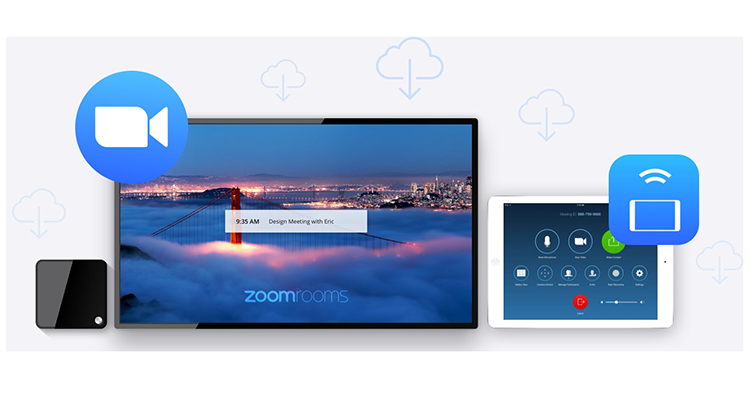Your Princess Is in Another Castle
 Each level of the classic Mario game would end with our hero having battled through hoards of foes to rescue his beloved, only to be greeted with the now-familiar message that his princess is in another castle. The inherent sexism of the princess-rescue trope aside, this is what I think when I look at the work many individuals and businesses in the AV world have done to develop what we thought of as the key skills for success in the workplace, only to find that while we were storming the gates the prize moved to a different castle altogether. Have we been climbing the wrong mountain? What is the face of tomorrow’s AV workforce — and who will that workforce be? Let’s start by looking back.
Each level of the classic Mario game would end with our hero having battled through hoards of foes to rescue his beloved, only to be greeted with the now-familiar message that his princess is in another castle. The inherent sexism of the princess-rescue trope aside, this is what I think when I look at the work many individuals and businesses in the AV world have done to develop what we thought of as the key skills for success in the workplace, only to find that while we were storming the gates the prize moved to a different castle altogether. Have we been climbing the wrong mountain? What is the face of tomorrow’s AV workforce — and who will that workforce be? Let’s start by looking back.
Installed AV systems, especially conference systems, once required great measures of special skills and tools. The DSP configuration software. The control system programming kit — and a trained programmer to match. Special crimp tools for the locking BNC connectors a professional display would have in place of RCAs. Even a straight presentation room with no conferencing would use types of connectors and cable unfamiliar to the average support team, even in a large enterprise.
The installation of a professional meeting room required the services of professionals. A programmer to set up the control system. Helper techs to pull cable and hang a display. A lead tech to supervise everyone else, load code into the system, test and commission. The best thing is that the helper technicians — the ones doing the simple physical work — have a path upwards. They’re on-site with the lead tech, and can eventually learn the higher-level, more interesting, more lucrative skills.
Nothing lasts forever.
Slowly but surely, the more esoteric parts of our job are fading. Software conferencing has replaced the difficult-to-configure video codecs. With physical media all but dead in most applications, the need for video switching has faded. With the loss of switching, we lose much of the need for control systems, for programmers, for many of the traditional lead tech roles. Even the helper techs no longer need to know how to terminate specialized AV cables.
Manufacturers and end-users are realizing this as well. In a recent meeting with Nancy Knowlton of Nureva I got a bit reminder of where this is going. The Nureva product is a multi-element microphone array and loudspeaker designed to interface with a PC for software-based conferencing. There’s a very simple configuration of a coverage area and not much else. The audio quality is quite impressive, with even coverage throughout a 600-square-foot conference room. The device features a linear array of microphones (after some quizzing I was told that the “HDL” in HDL300 could stand for “High Definition Line array.” 300 is just a number, but one that gives them room to introduce smaller or larger variants. Expect to see one of these at ISE next month.) The interesting thing wasn’t the audio quality; it’s the business model. Nureva’s focus is on the higher education market (unsurprising given Nancy Knowlton’s former role as a co-founder of SMART technologies), and most of their sales are directly to schools. That’s right — this is a high-quality conferencing system that’s sold primarily to end users and not through AV integration partners.
In a recent Sunday morning twitter discussion (#AVinTheAM for those interested in joining), one AV professional lamented the move to DIY as a downside of new technologies. I disagree. It’s only a downside if, having fought your way to the gates of the castle, you are insistent on your prize being therein. More to the point it is, at the very worst, only a downside to AV integration firms fixated on their current business model. To the eventual users, the newer and simpler systems are better.
Easy to install.
Web-based configuration.
No programming.
No special hardware or software tools required.
Lower labor cost.
All of those are positives for the user, and it is the user who ultimately matters. If you lament the loss of your six-figure technical specialist position or five-figure UI development line-item then you’re making an entirely self-serving yet ultimately self-defeating argument. Lower-cost, even commoditized AV systems are better for users, which give them a better impression of the AV industry and at the end of the day makes us more worthy of respect as partners. That said, we are losing something, if we’ve not lost it already.
Where does that leave us?
The easy answer is that for certain project types, it does leaves us out. Why hire an integrator when you can build your own conference room with basic tools? If installing the recording system in your classroom is a matter of hanging one device, connecting one cable and installing some software on your PC, then why call a professional? For that matter, if one is using an all-in-one conference system connected to a PC, do you really need a systems designer to tell you how to connect it?
Perhaps not, but there exist two things a professional integrator can handle better than most in-house teams: Complexity and scale.
Complexity is the easy one. You know the spaces about which I’m thinking. The divisible multi-purpose room. The auditorium. Even the boardroom. Spaces with more complex operations still generally don’t do well with out-of-the-box solutions. Unfortunately, that’s a small minority of spaces. It’s still a niche, and one which many integrators can still fill. That doesn’t fill all of our client’s needs, and likely isn’t enough volume for any but the smallest boutique integrator or designer.
The next part takes us to those simpler spaces and the role of a professional in those jobs that don’t seem to, on their own, require one. Scale. Yes, the average internal support team can easily install and configure a conference room or classroom or huddle space. That’s easy. The challenge comes when they need to deploy a dozen of them. Or a hundred. Now the professional services aren’t primarily integration, but coordination and project management. Staging for the scores of displays and other hardware. Coordination with other trades, monitoring and confirmation of room-ready status. This is where AV integrators need to think carefully about staffing and about their business models, lest we find ourselves at the gates of the wrong castle. This leads to one of the biggest shift I’ve seen in AV integration over the past years. It isn’t just how it’s done, but who is doing it.
Increasingly, I’m seeing telecom/data contractors bidding on AV work. Why not? They have teams who can pull and terminate cable. Mounting a display to a wall is an easily learned skill. And… that’s most of what you need for 90% of AV spaces. Because their install labor requires less skill, their installation teams can work for a lower labor-rate. Traditional integrators who insist on keeping the lead tech/helper tech model will find themselves falling behind to those who use cheaper labor. To stay relevant and competitive, integrators need to focus more on project management and less on the technical wizardry we all love.
Even as a design consultant I’m seeing the shift, though it’s not hit quite as hard. Ninety-percent of the work — infrastructure design, coordination with other design trades, even bidding and construction administration — remain largely unchanged. What I have seen is a sharp drop off in the time our team spends on system design — on the AV-centric parts of AV.
Will our world become a kind of zen parable in which we can only continue to do AV by no longer doing AV? Perhaps. Even if so, that means we still get to keep doing AV — so long as we fight our way to the right castle.





